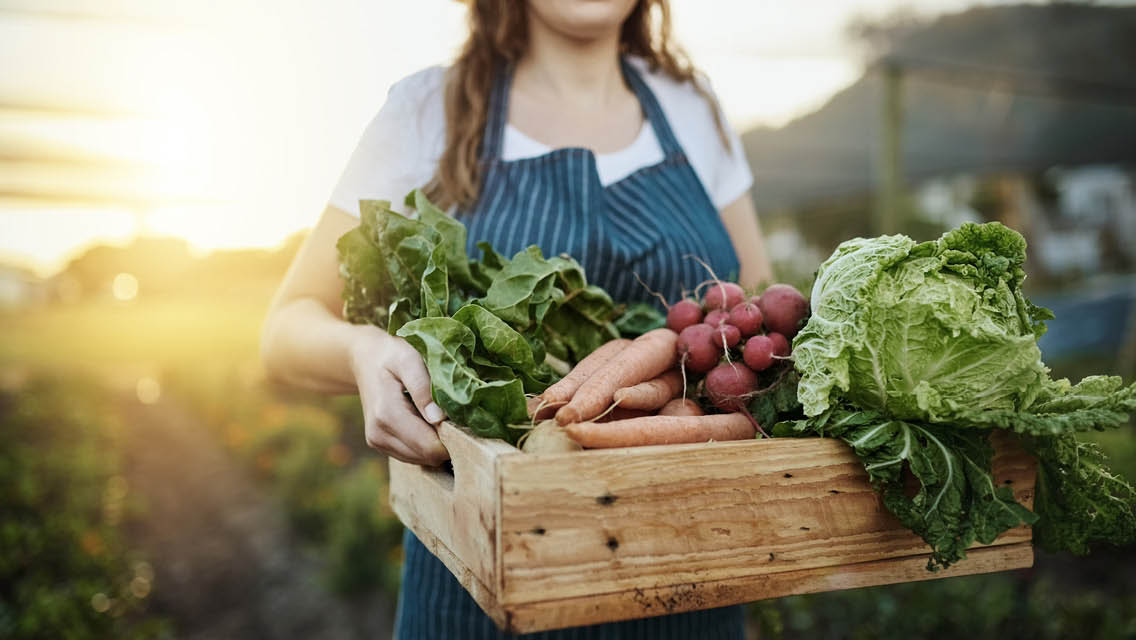When the term organic first entered mainstream consciousness back in the early 1970s, the word conjured images of bearded farmers, putt-putting tractors and bins of granola in dusty co-ops. If you don’t know it already, it’s time you took note: Organics have evolved. They’ve taken over produce displays, dry-goods aisles and freezer sections across America at a growth rate of 20 percent per year for the past 10 years, and their popularity shows no signs of stopping.
Until recently, organic producers became certified through one of many third-party agencies that heeded a number of varying state and private standards. The organics industry now answers to the USDA. Starting this summer, you’ll spot the official new certified-organic USDA seal on products in your local supermarket. This governmental embracement of the former black sheep, along with the $7.7 billion industry price tag, proves organics are big business.
Word Game
So what makes something organic? Community Relations Coordinator for the Saint Paul, Minn., Whole Foods Market Shannon Szymkowiak says that despite the increase in organic-seeking shoppers, many people are still fuzzy on the term. “Although the trend is continuing to grow,” she says, “a lot of people are still not 100 percent sure of what the word ‘organic’ really means.”
The USDA had a hard time coming up with accurate wording as well. In fact, the 2000 definition was their second attempt — in 1997, after seven years of discussion, they came up with one that people in the organics industry rejected. The recent, approved USDA interpretation offers definitive, across-the-board standards on what is (and is not) organic.
The in-depth definition regulates methods, practices and substances that can be used in producing and handling organic crops, livestock and processed products. A quick list of some major no-nos within the new certification standards includes: No genetically modified organisms, no irradiation, no artificial color or flavor, no inhumane treatment of animals, no sewage sludge used as fertilizer, no chemicals or artificial unsustainable herbicides, fungicides or pesticides.
Getting a grip on the definition is the first step, and understanding product labeling is the logical second. Some different types of label wording you should be aware of include the following:
- Conventional: Ingredients are produced by traditional (non-organic) farming methods. Pesticides and herbicides are all fair game.
- 100% Organic: Every single ingredient used in the product is organic.
- Organic: At least 95 percent of the ingredients are organic, not including water or salt. (A good example of this would be a pasta mix where the pasta and dried vegetables are all organic, yet the herbs are not.) The ingredients list will state which items are or are not organic.
- Containing Organic Ingredients: No fewer than 70 percent of the ingredients are organic. Again, the ingredients list will name organic and conventional items.
- Transitional: Products from farmers who are using organic farming methods but are not yet certified. It usually takes three to five years for a farm to fully convert to organic. Products labeled transitional can present a quality item at a good value.
- Natural: This does not mean organic. The USDA allows certified natural foods to be labeled “no artificial ingredients and minimally processed.” There are no regulations on animal treatment, synthetic pesticides, hormones and other elements forbidden in organic labeling.
- Free Range: A free-range animal must have USDA-approved access to the outdoors. This is misleading, however, since the general conditions for and treatment of free-range animals are often of the same poor quality as those for farm-factory animals. Hormones and other related elements are not regulated and could exist in the meat.
Discerning Tastes
Keep the differences in these terms in mind as you browse the aisles of your local supermarket or co-op, and be selective. Chances are that if you reach for a product marked “natural” or “organic,” you’re looking for something that reflects your values — values you don’t want to unknowingly compromise. Read the label closely, and don’t let a natural, “organic-looking” package fool you.
A couple of other things to remember: The word organic is not a synonym for healthy. Certified organic foods can still be processed or high in fat, sugar or sodium. Organic labeling also does not mean the ingredients in question come from small or local farmers. Organics are now a production standard, not a way of life, and many organic labels are actually owned and run by giant corporate conglomerates.
On a more positive note, organics are the fastest-growing category in the supermarket. And because of the rise in popularity and subsequent production streamlining, the prices of organic foods have actually dropped over the years. Organics may not be as expensive as they were last time you checked.
Although fears about the long-term physiological and ecological impacts of pesticides, herbicides and genetically modified foods have been a huge driver for organics’ growing popularity, Whole Foods’ Szymkowiak emphasizes that there’s another compelling reason people are making the organic choice. “When people taste conventional and organic produce side by side, most find that the flavor in organic food is much more lively. In the end, that’s what hooks them.”
Organic Avocado Arugula Salad with Basil-Mustard Vinaigrette
Serves: 4
Prep Time: 20 Minutes
A dressing made with flaxseed oil brings heart-healthy omega-3s to this flavorful salad. Accompany the salad with thick slices of whole-grain peasant bread and a wedge of cheese. Or, if you want to eliminate the wheat and dairy and stick with all live foods, try a side of thick-sliced tomato sprinkled with organic olive oil and sea salt instead.
- 1/4 cup organic flaxseed oil
- 1/4 cup organic balsamic vinegar
- 3 tbs. chopped fresh organic basil leaves
- 2 tsp. organic Dijon mustard
- 1 clove organic garlic, smashed and peeled
- 1/4 tsp. salt
- 1/8 tsp. pepper
- 2 cups organic baby spinach
- 3 cups organic arugula
- 1 pint organic cherry tomatoes
- 1/2 cup organic slivered red onion
- 1 organic avocado, cut into 1/2” cubes
Directions
- In a small jar, combine flaxseed oil, vinegar, basil, mustard, garlic, salt and pepper. Cover and shake until well combined.
- In a large salad bowl, combine spinach, arugula, tomatoes, red onion, avocado and dressing. Toss to combine.
Nutrition Facts
Per serving: 239 calories, 22g total fat, 2.5g saturated fat, 7.3g monounsaturated fat, 11g polyunsaturated fat, 4g dietary fiber, 3g protein, 12g carbohydrate, 0mg cholesterol, 241mg sodium. Good source of omega-3s!
Recipe courtesy of the Healthy Kitchen at www.wholehealthmd.com. Used with permission.
This article originally appeared as “Organically Grown” in the September 2002 issue of Experience Life.





This Post Has 0 Comments